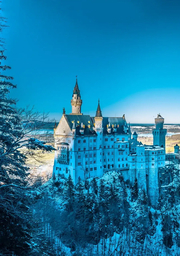What Should You Keep in Mind When Choosing Care Services for Your Family?
If you’re a family member caring for elderly loved ones or looking after a disabled relative, it can be tough to know where to start when finding care services. With so many choices and the potential for unfamiliar challenges, you want to get informed and make the right decisions.
That’s why we’ve put together this guide – so that you can understand what should go into choosing quality care services from reputable organizations that will meet your needs and those of your family members.
In this blog post, we’ll help you navigate through the different types of care available, discuss financial considerations, and provide support on how best to find a trustworthy provider for your particular requirements.
Research Different Types of Care Service Providers
There are a variety of care service providers available to those seeking support for their elderly loved ones. Look for elderly home care services that specifically cater to those seeking personalized care for their aging family members. These services offer the ability for the elderly to receive care in the comfort of their own homes while still being provided with the necessary attention and support. Alternatively, you may consider assisted living facilities or nursing homes for those who require more intensive care and assistance.
Thoroughly research each type of care service provider to determine which one will best meet the needs of your family member. Consider factors such as cost, location, services provided, and staff qualifications before taking the plunge.
Compare Each Provider
After you’ve conducted thorough research on different types of care service providers, the next step is to compare them. Make a list of potential providers and evaluate each one, taking into account your specific needs and the needs of your family members. Here are some valuable tips to keep in mind during this process:
- Ask for references from each provider and follow up on them. Speak to previous or current clients, as well as their family members. This will give you firsthand insights into the quality of care and services provided.
- Look into the provider’s reputation. Check online reviews and ratings, ask for recommendations from trusted sources, and research any complaints or violations.
- Inquire about the provider’s staff qualifications and training. It’s important to ensure that those caring for your family members are properly trained and qualified to do so.
- Consider the location, accessibility, and convenience of each provider. This is especially crucial if you or other family members will be involved in the care process.
Take the time to compare and contrast each option, and you can feel confident in your decision and ensure that you’re getting the best possible service for your senior care needs.
Ask for References From Friends and Family
Turning to people you trust for references can be extremely helpful in your search for a care service provider. If you’re looking for personalized care options, home care services offer a range of solutions tailored to individual needs.
Friends, family, or colleagues who have gone through a similar process can provide valuable insights and recommendations. They can share their experiences — both positive and negative — about particular providers, giving you a more personal view of the services available.
Ask them about the quality of care, the professionalism of the staff, and how the provider handled any issues or problems that arose. Their feedback can help you refine your list of potential providers, saving you time and reassuring you that you’re making the right choice for your family.
Consider Your Budget
Cost is unquestionably a significant factor when selecting a care service provider. It’s essential to have a clear understanding of your financial resources and how much you can realistically commit to care services without straining your budget. Factor in government assistance programs or insurance coverage that may be available.
Different providers have varying pricing structures for home care packages, so be sure to ask for detailed information on all costs involved. Some providers may offer a flat rate while others might charge additional fees for specific services. Most of the time, the most expensive provider doesn’t necessarily guarantee the best care. What matters is the quality of care your loved one receives. So balance cost considerations with the provider’s qualifications, reputation, and the feedback you’ve gathered from references.

Look Into the Availability of Local Support Groups
Local support groups can be a treasure trove of information and emotional support when navigating the complex landscape of care services. Whether they are formed by other families who have procured care services, professionals in the field, or community-based organizations, these groups can provide advice, recommendations, and a sense of community during this challenging time. They can offer firsthand insights into local providers, assistance with financial planning, and strategies for handling the emotional aspects of securing care for a loved one.
Local support groups can even provide much-needed moral support from people who understand what you are going through. Keep in mind that reaching out for help is not a sign of weakness; it’s a step towards ensuring you’re making the best possible decisions for your family.
Choosing a care service provider for your loved ones is a personal journey that requires patience, diligence, and empathy. Although it may seem overwhelming, remember that your efforts are for the welfare of your family member who deserves the best possible care.
Do your best to gather as much information as you can, rely on the counsel of trusted friends, family, and local resources, and consider your decision carefully.
Are your parents still in their own home or perhaps living with you?
Related Reading
Home safety tips for households living with elders.
From little ones to loved ones visiting grandparents in home care.







